Chess device process documentation
Team: Nathan Serafin, Alyssa Casamento, Josh LeFevre
Our process
Brief Intro
We built this Fischer-random Chess device to help Steve both teach Fischer-random Chess and play Fischer-random chess during chess club and during chess tournaments. Our idea was to decrease the time and frustration for Steve to set up a Fischer-random chess game: currently the standard process is quite clunky. We worked through logic to randomly assign the back row chess pieces to random locations based on rules within the game.
To learn more about our idea and our initial design research process to discover this need, check out our first post, here.
The Prototype
The solution allows the suer to place the randomizer along the back row of a chess board. They would then press the randomize button (in this case, the red button) which would illuminate or designate where to place one’s chess pieces. In our prototype we used a color light strip to indicate the different pieces based on color. For the final, we hope to encode the piece data into the actual light or digital output.
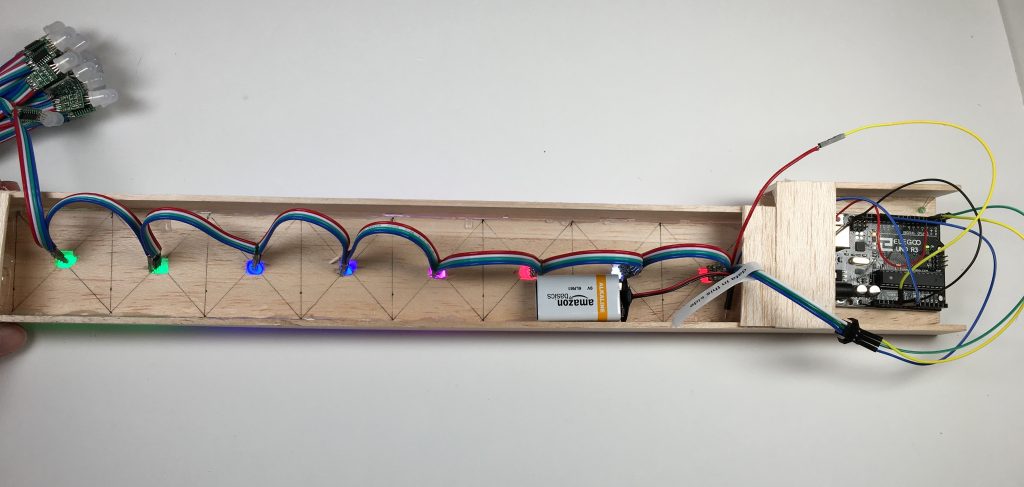
The underside/components side of our prototype. In this test, we chose to use RGB LED lights to show the result of our randomized functions.
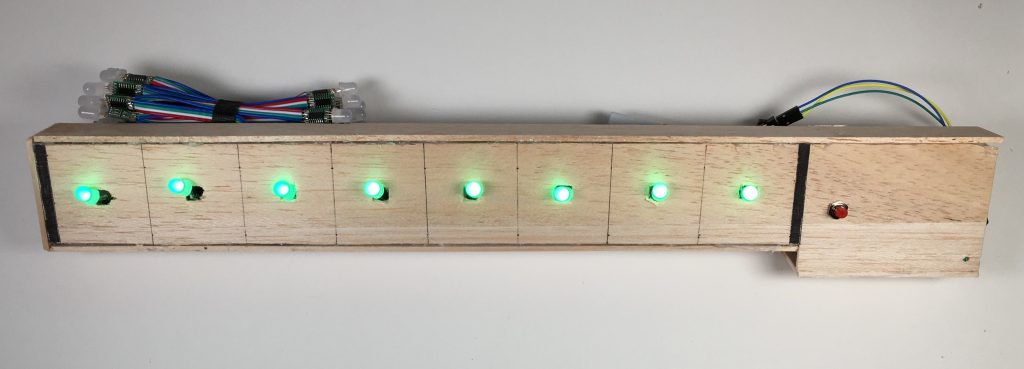
Start up state to dow the devices one and read to randomize.

Once the red button in the model is pushed, the randomized set up for Fischer-random chess is created. Each push of the button creates a new legal and random configuration. Currently each light color is associated with one chess piece on the background.
Process Documentation
Progression
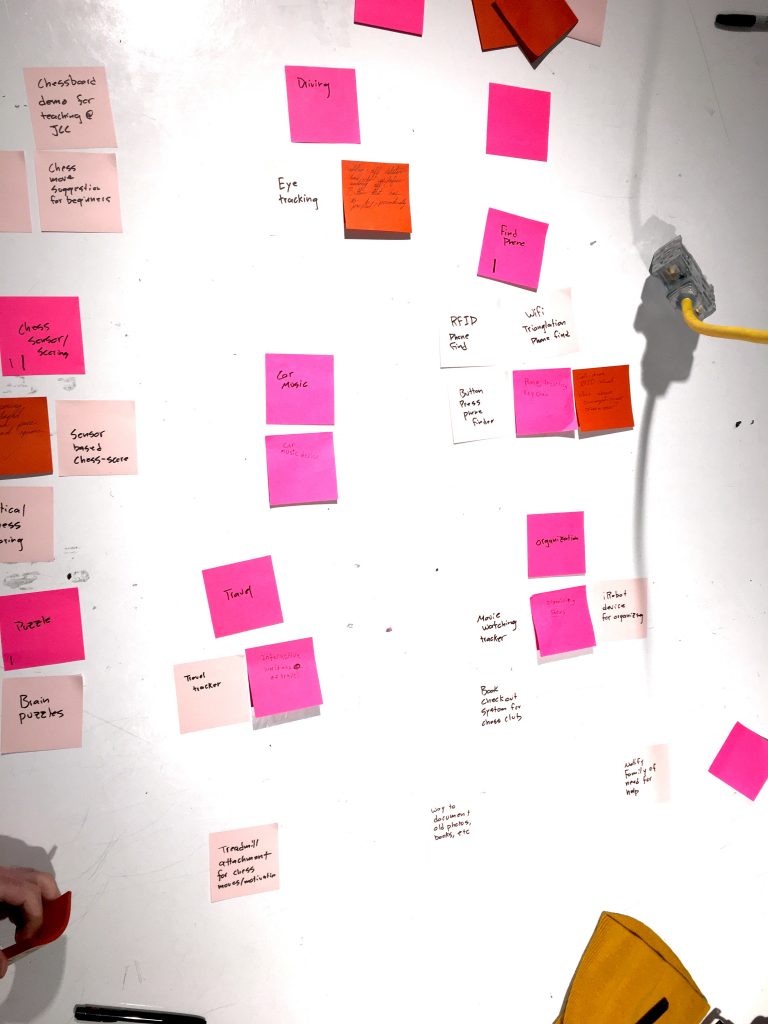
Ideation. During this step we synthesized the insights from Steve along with our ideas, hesitations and limitations. Out of this discussion we landed on the Fischer-random chess device.

Diagraming possible electrical circuits to see if a location and chess pice movement indicator would be possible. We eventually abandoned this idea because of the complicated electronics needed to track all the chess pieces on a 8×8 chess board.
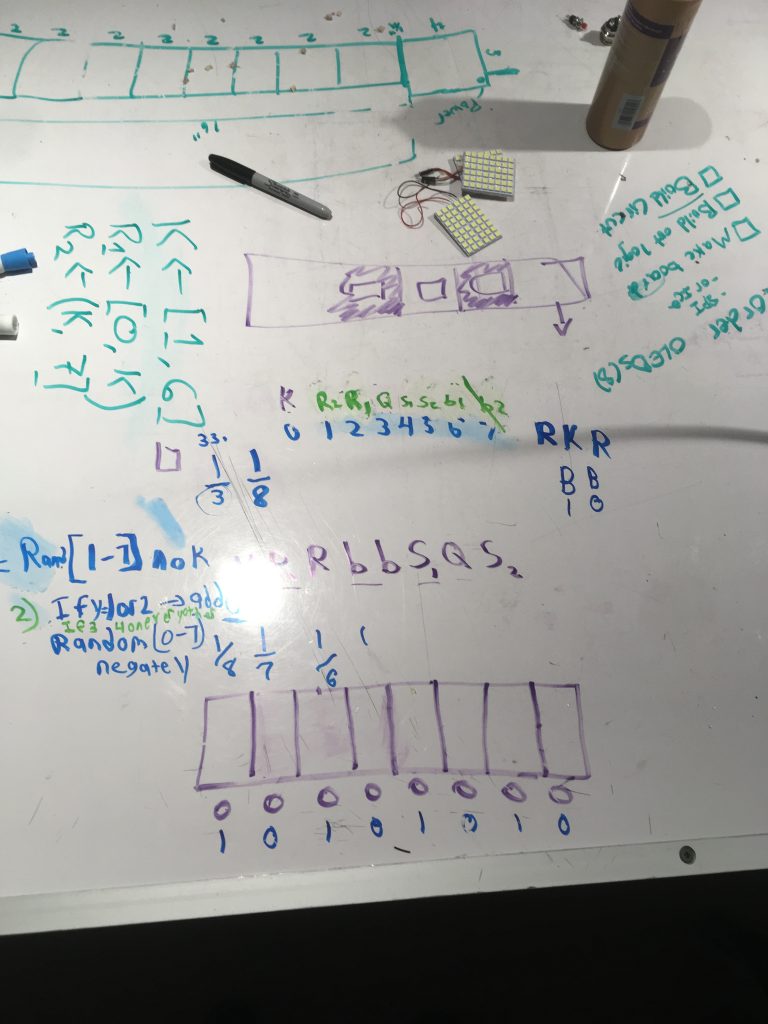
Diagraming and discussion logic for randomized piece placement.

Roughing out a balsa wood prototype for a rapid design process, in order to give our idea form without spending too much time getting lost on a refined output before our critique.
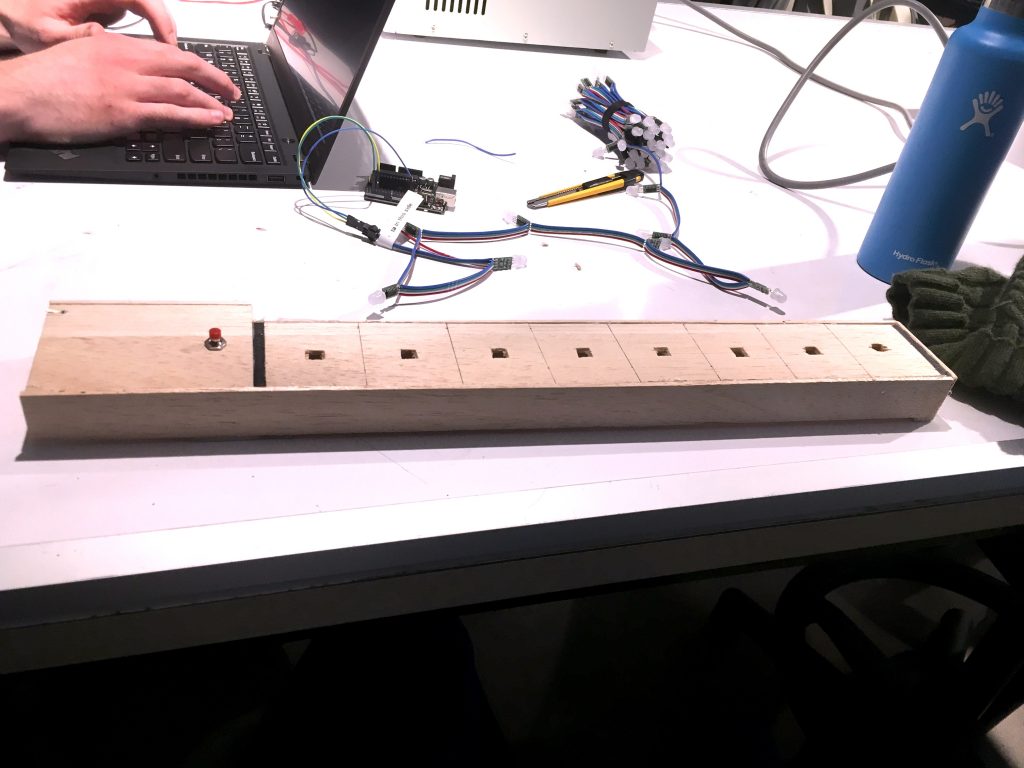
Uploading and testing our wiring on the initial code
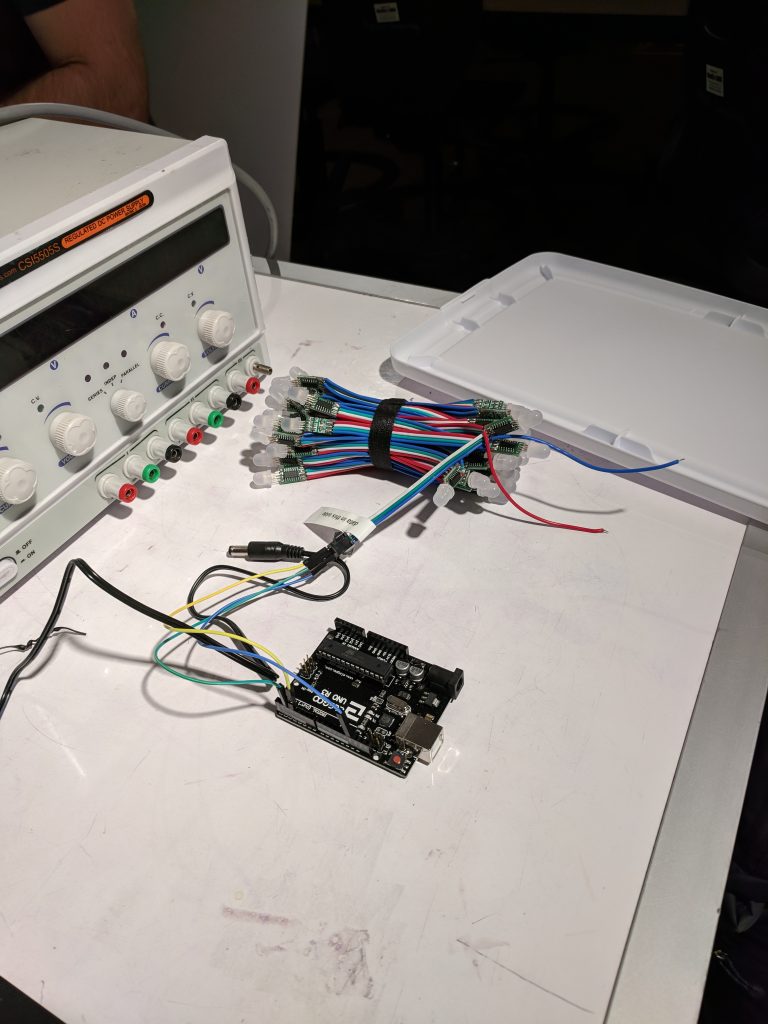
Setup for initial testing of LEDs
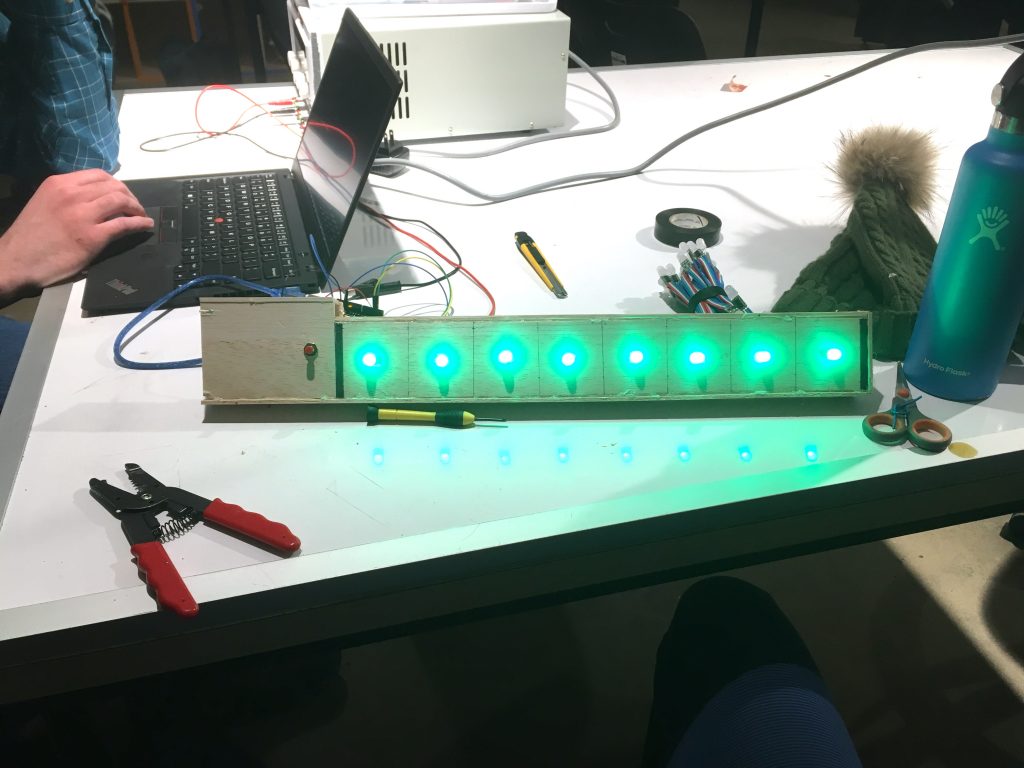
First system test
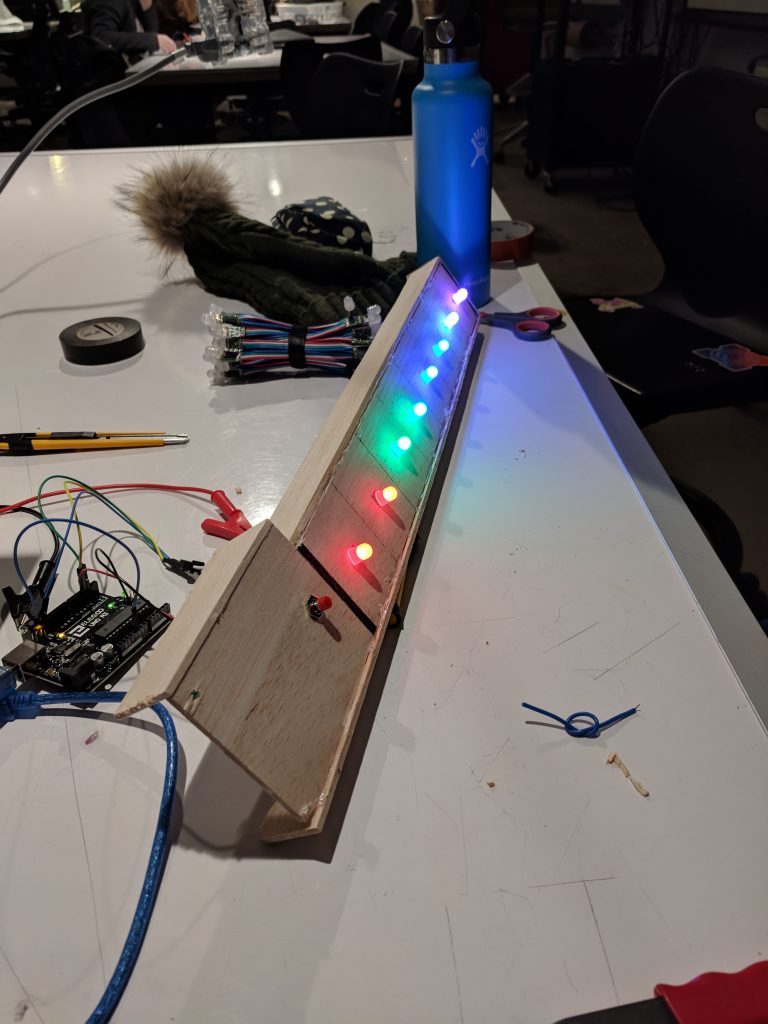
Initial testing of patterns
Challenges
The biggest challenges that we are currently facing are:
- Making the unit small enough for easy portability
- Figuring out the proper form within which this device should live
- Linking up enough neopixel lights or OLED screens, at a reasonable price, to both the Arduino and the chess board.
- Finish the code to run randomly without writing out every permutation, since the Arduino does not have a native shuffler.
We are working through creating a truly random code which is near completion, and finishing product physicality. The limitations in Arduino screens, cost, and location have been frustrating, but we have specified our solution through the added constraints.
April 11th critique: Reflection
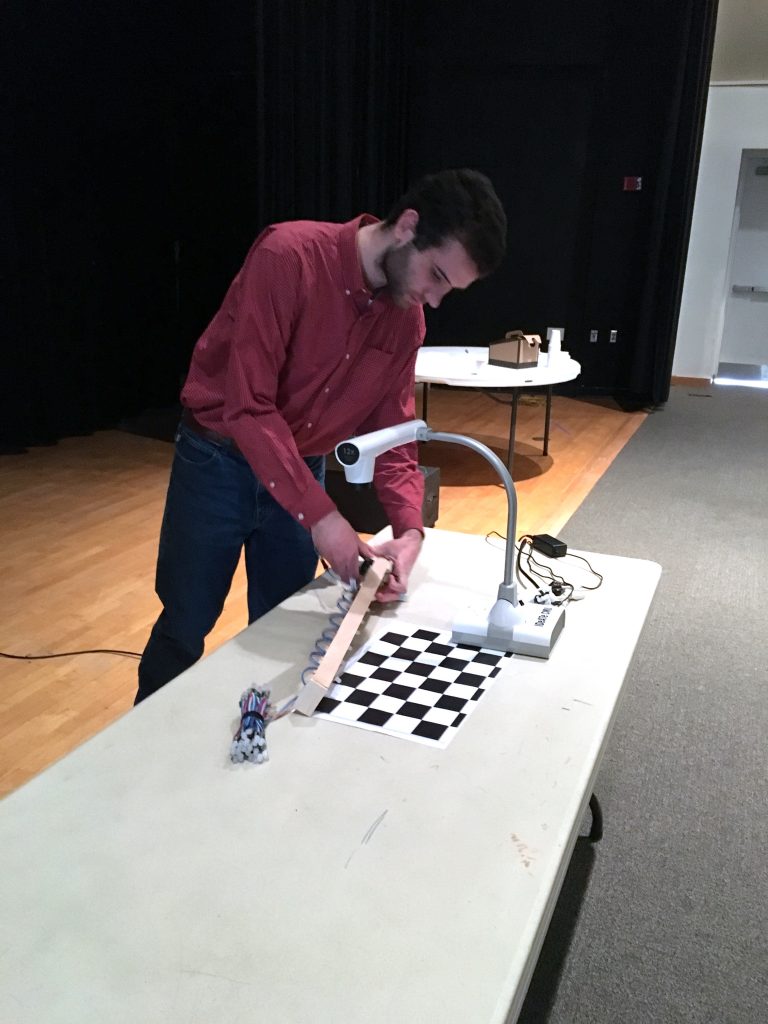
Nathan during our presentation at the JCC on April 11
Our critique at the JCC was overall helpful. Sharing our ideas with the class and all participants helped us solidify our idea by verbalizing it out loud. However, we felt that the critique would have been more helpful if the event was structured more like a science fair style or with rotating small groups. In the smaller groups we believe we would have received more specific and meaningful feedback.
Steve loved our project and suggested that we add official chess logos for each piece that would light up to more clearly indicate where to place the chess pieces. Also, he confirmed that our randomizer would be helpful. He also noted that it would be fine if our end design was more compact and portable. In addition, he confirmed that battery power would be the most useful power source.
From the audience we heard:
- Concerns that the item would not be adopted because individuals may be leery of our randomization
- That we should make the lights logos, similar to Steve’s feedback
- Making the unit smaller and more compact would be helpful
- That we should make a decision whether or not the project is battery powered or DC powered
Overall, from the feedback we received we are determined to make our device smaller, battery powered, and utilize the chess logos. We will also finish building out the randomizer code to make use of the 960 back row combination possibilities.
For the final interaction, we also plan to house the unit in a more polished wood or plywood construction to add rigidity and polish to the end result.

Leave a Reply
You must be logged in to post a comment.